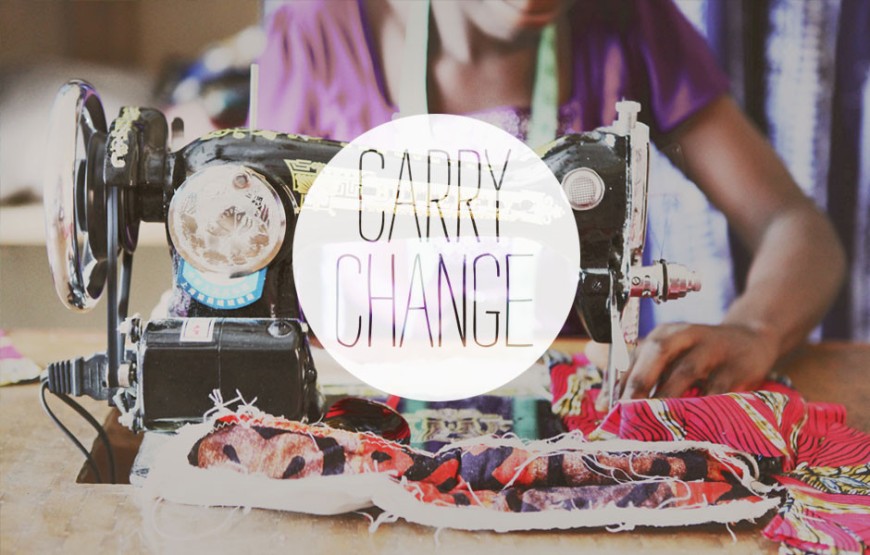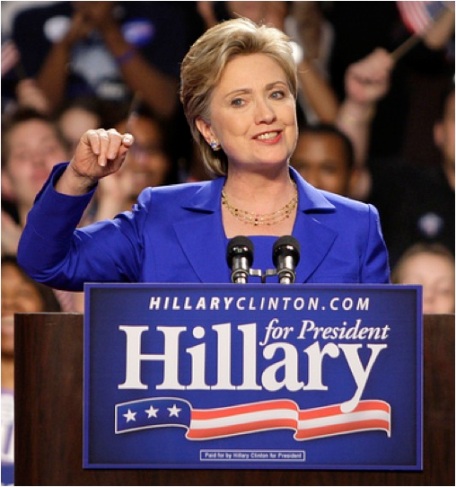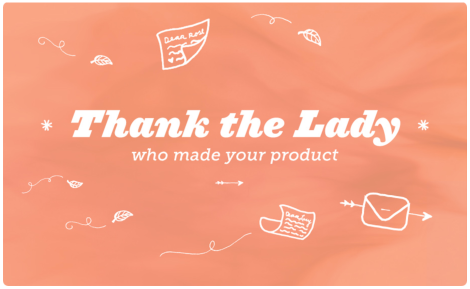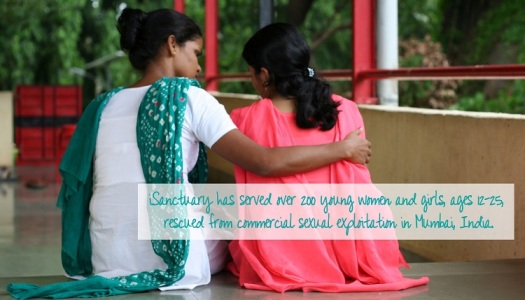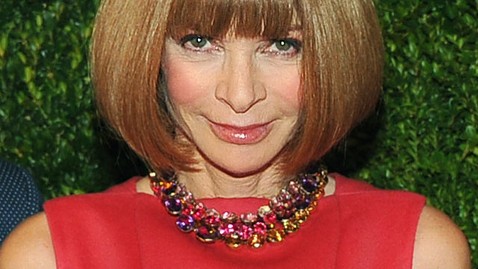Meet Della. They are a Los Angeles and Ghana based socially responsible fashion company creating beautifully unique items and changing lives through economic empowerment. An entrepreneur from Los Angeles teamed up with an entrepreneur from Ghana with a shared vision to “build a foundation for a better life through jobs, education and skills training.” They believe in doing business right through responsibility and not through charity. The currently empowered 55 employees attend weekly literacy classes and money-management training. This ensures their success will be sustained even beyond their time with Della.
Diane von Furstenberg: Embracing Her Feminine Side
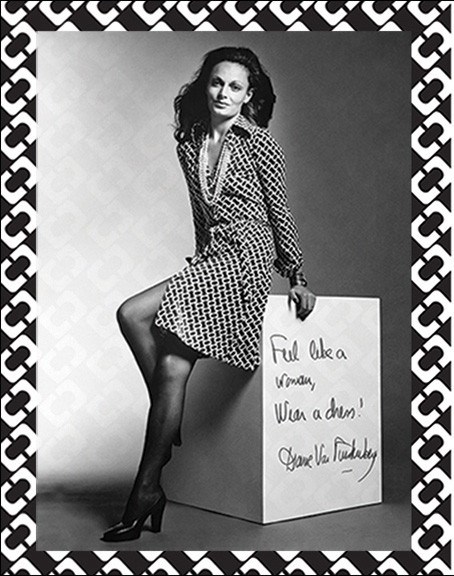 Diane von Furstenberg is a well known Belgian-born American designer who created the iconic wrap dress in the 1970s. In honor of the 40th celebration of the dress that created her DVF empire, I wanted to highlight her life as a high powered woman who uses her unique feminine touch to make an impact on the world of fashion and design. She got her start at a time when women embraced their independence and returned to the public work force in large number. It was a moment in history when women were encouraged to become like men in order to be taken seriously in the primarily masculine environment of an office. It all started with a woman’s appearance and the pant suit became a wardrobe staple for the working woman. With it’s broad shoulders and pleated trousers, a woman was sure to blend in at the old boys club in a pant suit. Yet DVF believed this severely limited independent women by forcing them to conform to masculine notions of power.
Diane von Furstenberg is a well known Belgian-born American designer who created the iconic wrap dress in the 1970s. In honor of the 40th celebration of the dress that created her DVF empire, I wanted to highlight her life as a high powered woman who uses her unique feminine touch to make an impact on the world of fashion and design. She got her start at a time when women embraced their independence and returned to the public work force in large number. It was a moment in history when women were encouraged to become like men in order to be taken seriously in the primarily masculine environment of an office. It all started with a woman’s appearance and the pant suit became a wardrobe staple for the working woman. With it’s broad shoulders and pleated trousers, a woman was sure to blend in at the old boys club in a pant suit. Yet DVF believed this severely limited independent women by forcing them to conform to masculine notions of power.
Margaret Thatcher: The Iron Lady
Margaret Thatcher was known around the fashion world for her feminine consistency through her signature pearls and bows. As Phelan notes, “In many ways Thatcher’s dress sense set the mold for how female politicians dress today: conservative, powerful (yet feminine) and above all, consistent.” She understood the power of an image and the way in which she used her appearance by playing up her femininity that fully complimented her greater political message of conservatism and consistency. Her personal assistant once said, “Thatcher used clothing to help create a variety of personas from housewife to the Iron Lady, and to build relationships overseas and send political messages. She was initially resistant about focusing on dress in her public life, but over time learned to adapt and master dress to suit certain political ends and help craft a dominant and secure political status.”
Hillary Clinton: Transitioning to an Executive Presence
Hillary Clinton was very aware of the image she had created leading up to her campaign for President in 2008. Even before running for President, as Senator she strived to exude a more masculine appearance in order to distinguish herself from the hyper-feminine appearance she had created as First Lady. When transitioning to a campaign for President, she valued the masculine lawyer-esque persona she had created yet she knew she also had to connect with her feminine side in order to appeal to the everyday woman as wife and mother. She did this rhetorically in her initial campaign announcement speech yet appearance wise the masculine image took over and the balance with the feminine was not maintained.
Krochet Kids: Creating Connections & Building Capacity Through Crocheting in Peru & Uganda
Krochet Kids was founded on the principle of empowering people to rise above poverty. Three friends, who actually happen to be guys, realized the simple skill of crocheting could actually change lives. This skill was something they learned in high school that they eventually brought to women in Uganda and Peru. They employ over 150 women through a model that not only provides economically, but also brings education and mentorship. With a vision to change the world, they plan to continue expanding to even more countries in the years to come. Continue reading
iSanctuary: Providing Refuge through Employment for Human Trafficking Survivors in India
It all started when the founder, Stephanie Pollaro, was looking though a fashion magazine and came across a startling story on human trafficking in India. She knew she had to do something and it quickly turned into the the idea for an organization that works to bring an end to human trafficking through the creation of fashion. iSanctuary’s mission is “to advocate for exploited people of the world, to educate the public about human trafficking and its prevention, and to be instrumental in providing the means to be reintegrated as valued members of a community.” They do this primarily in India where they employ over 200 survivors of human trafficking. Mumbai, India is Asia’s largest sex industry center where more than 100,000 people are sexually exploited. Continue reading
Ann Romney & Michelle Obama: Fashion Politics in the 2012 Presidential Election
Oscar de la Renta, who is a well-known and well-loved American fashion designer once said, “What better endorsement for our industry than to have a wonderfully well-dressed first lady?” He is known for dressing first ladies through the years as “Laura Bush and especially Hillary Clinton both had his frocks in heavy rotation when they were First Ladies.” Fellow fashion designer Nanette Lepore recently wrote an article in the Huffington Post where she argues, “Like all businesses in America, fashion needs support from its leadership. It’s important for Americans to buy American-made products, and we look to our First Lady and the President to set that standard.” Ann Romney apparently took this to heart in the recent presidential election. She used her appearance at the Republican National Convention to make a statement by wearing a red Oscar de la Renta dress, something that Michelle Obama has never done. Continue reading
Anna Wintour: When the Fashion Industry Meets the Political World
Through the years the global fashion industry has increased its cultural and corporate influence as well as its overall role in the political world as a soft power player. As Robb Young records, “With the greater numbers of women now occupying high political office around the world, the fashion industry is increasingly interested in using them as reference points to illustrate trends, or as targets of their advice” (151). Late last year Vogue magazine’s editor in chief, Anna Wintour, received much media attention for a potential ambassadorial position to either the United Kingdom or France. Continue reading
Catherine Middleton: The Girl Next Door Icon
In a similar way as Jackie Kennedy, Kate Middleton is able to positively use her image as a fashion icon today, which can be understood by examining media coverage leading up to her union with Prince William. The history of the UK has often been defined by the power struggle within the monarchy. Yet presently, according to the Telegraph, historian Simon Schama notes of the monarchy and wedding, “Power has nothing to do with it. This is the simple sense of connection.” This sense of connection is clear as many people across the world resonated with the Royal Wedding and felt a personal bond to William and Kate. The British monarchs have little to no hard power, as Schama’s remark resonates, yet they maintain a substantial amount of soft power both domestically and abroad. The “Windsor Power” of a British Royal Wedding is evident in its ability to not only captivate the attention of the world but also to evoke a sense of pride in its own citizens. Continue reading
Jacqueline Kennedy: A Timeless Classic Presence
It takes a unique disposition to gain primarily positive media attention for one’s country without actually using words, but rather by conveying a type of soft or indirect power primarily through appearance. Wives of political leaders are in a distinct soft power position to use their image as a tool of communication. The United States’ President’s wife carries out a diplomatic role in the world. As White House hostess to foreign dignitaries she is often the foremost female representative of the U.S. Historically, the First Lady has been a source of soft power as an unofficial international representative of the U.S., particularly in the eyes of international media. The office of the First Lady is unlike any position in the world. It has evolved through the years and taken the shape of the personality and initiative of the existing First Lady. Continue reading

